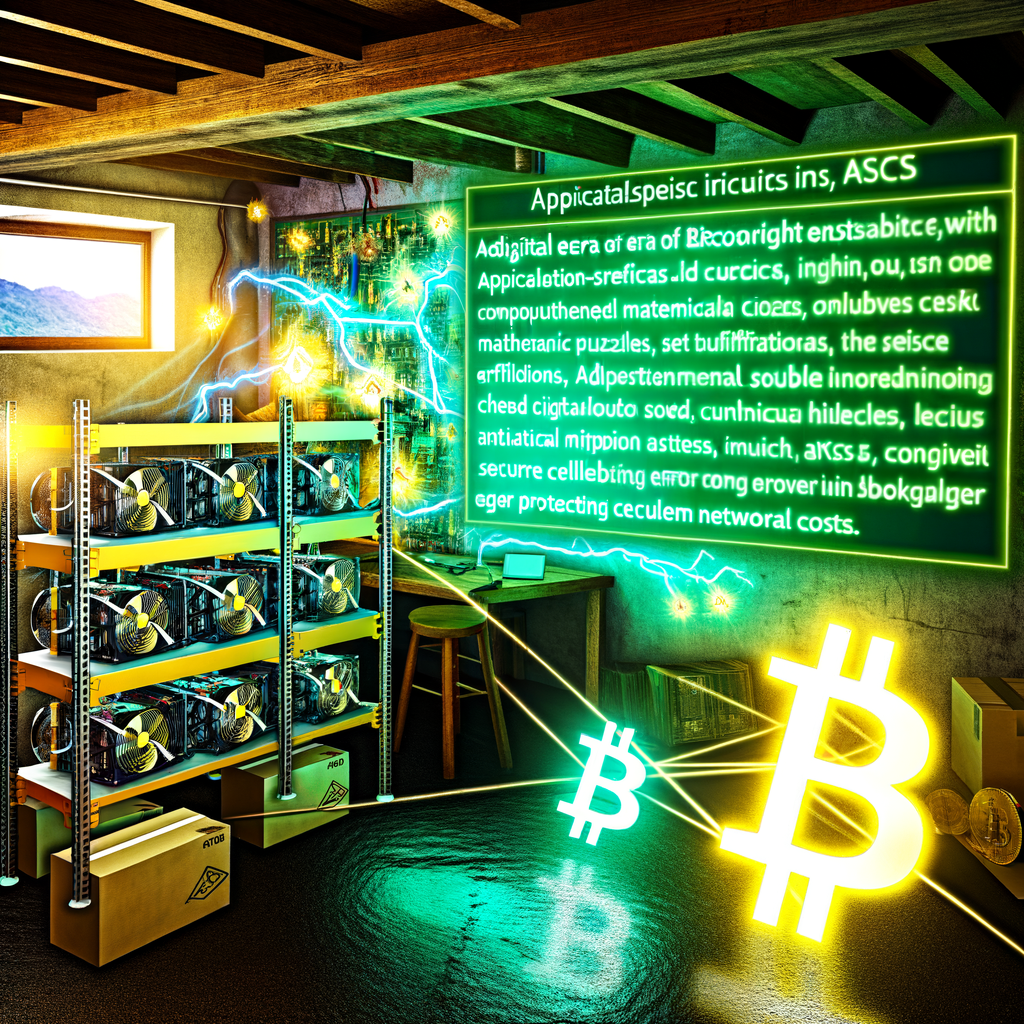In the rapidly evolving landscape of blockchain technology, scalability and efficiency remain critical challenges. zkSync emerges as a revolutionary Layer 2 scaling solution designed to address these issues, promising faster transactions and lower fees without compromising on security. This article delves into the world of zkSync, exploring its history, functionality, benefits, and role within the Ethereum ecosystem. Whether you’re a seasoned blockchain enthusiast or just beginning your journey, understanding zkSync’s potential can provide valuable insights into the future of scalable blockchain solutions. Read on to discover how zkSync is paving the way for a more efficient and inclusive decentralized world.
What is zkSync?
zkSync is an advanced Layer 2 scaling solution designed to enhance the Ethereum blockchain’s throughput and efficiency. By leveraging zero-knowledge rollups, zkSync enables significantly higher transactions per second (TPS), while drastically reducing transaction costs. Unlike traditional Layer 1 operations, which often suffer from congestion and high gas fees, zkSync combines the security of the Ethereum mainnet with the scalability of off-chain computation. The result is a faster, more efficient blockchain experience that remains decentralized and secure. zkSync’s innovative approach holds the promise of making blockchain technology more accessible and practical for a wide range of applications including decentralized applications (DApps).
History and Evolution of ZKsync
zkSync’s journey began with the recognition of scalability limitations within the Ethereum network. Developed by Matter Labs, the project was first introduced in 2019 and quickly garnered attention for its innovative approach to Layer 2 scaling. By leveraging zero-knowledge rollup technology, zkSync allows thousands of transactions to be processed off-chain and then batched onto the Ethereum mainnet, thereby reducing congestion and lowering gas fees. Over the years, zkSync has undergone multiple iterations and optimizations, each aimed at enhancing its performance, security, and user experience. The project has grown through community engagement, partnerships, and continuous advancements, solidifying its position as a foundational technology in the pursuit of scalable and efficient decentralization. As zkSync continues to evolve, it remains committed to pushing the boundaries of what’s possible in blockchain scalability, offering a promising glimpse into the future of high-speed, low-cost transactions.
3. How zkSync Works
zkSync leverages zk-rollup technology to bundle numerous transactions off-chain into a single batch, which is then processed on the Ethereum blockchain. This method achieves significant scalability by performing most of the transaction computations off the main chain, thereby reducing the load on the Ethereum network. The process involves generating cryptographic proofs, known as zero-knowledge proofs, which verify the correctness of the off-chain transactions. These proofs are then submitted to the Ethereum mainnet, ensuring the security and integrity of the transactions. Additionally, zkSync supports Ethereum smart contracts, enabling developers to build and deploy decentralized applications with enhanced performance. By minimizing on-chain data and optimizing gas fees, zkSync not only accelerates transaction processing but also makes it more cost-effective, making blockchain more accessible to a broader audience.
Benefits of Using zkSync
zkSync offers numerous advantages that make it a compelling choice for users and developers alike. Firstly, it significantly enhances transaction speed, allowing users to experience near-instantaneous transfers compared to the slower processing times on the Ethereum mainnet. This speed is coupled with reduced transaction fees, making it more cost-effective for users to engage in blockchain activities. Additionally, zkSync leverages zero-knowledge proofs to ensure robust security and maintain the integrity of transactions. This advanced cryptographic technique helps to protect user data while minimizing the computational workload. Another key benefit is zkSync’s compatibility with existing Ethereum smart contracts, ensuring a seamless transition for developers who wish to build on this Layer 2 solution without extensive modifications. By improving scalability and efficiency, zkSync supports the broader adoption of decentralized applications, ultimately contributing to a more accessible and user-friendly blockchain ecosystem.
5. Key Features of ZKsync
zkSync is packed with several groundbreaking features that set it apart in the realm of Layer 2 scaling solutions. One of its most notable characteristics is its use of zero-knowledge rollups, which help to significantly increase transaction throughput while maintaining security. Additionally, zkSync offers incredibly low transaction fees, making it economically feasible for a wide range of applications.
Another impressive feature of zkSync is its seamless integration with the Ethereum network, ensuring compatibility with existing Ethereum smart contracts and DApps. This means developers can easily leverage zkSync’s capabilities without significant changes to their existing codebase. Furthermore, zkSync supports instant withdrawals, allowing users to move their assets back to the Ethereum mainnet quickly and efficiently.
Security is also a paramount concern for zkSync, and the system employs robust cryptographic proofs to ensure data integrity and prevent fraud. The platform is highly decentralized, relying on a network of validators to maintain consensus and secure transactions. Lastly, zkSync is designed with user experience in mind, providing an intuitive interface for both developers and end-users alike. These key features collectively make zkSync a powerful player in the quest for scalable and efficient blockchain solutions.
6. zkSync vs Other Layer 2 Solutions
When comparing zkSync to other Layer 2 solutions, several key differences and advantages become apparent. zkSync leverages zero-knowledge rollups, a technology that securely aggregates multiple transactions off-chain and verifies them with a single proof, dramatically increasing throughput. This stands in contrast to optimistic rollups, which rely on game-theoretic dispute mechanisms that can lead to longer finalization times. Additionally, zkSync’s compatibility with the Ethereum Virtual Machine (EVM) ensures seamless integration for developers, allowing them to deploy existing Ethereum smart contracts with minimal modifications. Furthermore, zkSync prioritizes user experience, offering instant confirmation times and reduced transaction costs, which are essential for fostering broader adoption. While other Layer 2 solutions like Plasma and state channels provide valuable enhancements, zkSync’s unique combination of scalability, security, and ease-of-use positions it as a leader in the Layer 2 space. By addressing the limitations of both on-chain and other off-chain solutions, zkSync not only contributes to the efficiency of the Ethereum network but also paves the way for more robust and accessible decentralized applications.
7. zkSync’s Role in the Ethereum Ecosystem
zkSync plays a pivotal role in enhancing Ethereum’s capabilities by significantly improving its scalability. As a Layer 2 scaling solution, zkSync reduces transaction congestion on the Ethereum mainnet by processing transactions off-chain and then recording them on-chain, thus ensuring the security and decentralization inherent to Ethereum. This innovation allows for faster transaction times and dramatically lowered fees, making Ethereum more accessible and practical for a wide range of applications, from decentralized finance (DeFi) to non-fungible tokens (NFTs). Additionally, zkSync’s compatibility with existing Ethereum smart contracts and infrastructure means developers can seamlessly integrate it without overhauling their projects. By resolving some of the critical limitations of Ethereum, zkSync enhances its overall utility and fosters wider adoption across different sectors of the blockchain industry.
8. Applications and Use Cases of zkSync
zkSync’s capabilities transcend various domains within blockchain technology, offering practical solutions for numerous applications and use cases. One prominent application is decentralized finance (DeFi), where zkSync enhances transaction throughput and reduces gas fees, making it accessible for broader adoption and utilization. Moreover, non-fungible tokens (NFTs) greatly benefit from zkSync’s efficient batch processing and lower transaction costs, enabling creators to mint and trade assets seamlessly.
In addition, zkSync can significantly improve cryptocurrency exchanges by offering faster and cheaper transactions, thereby enhancing the overall user experience and promoting greater liquidity. Payment channels and micro-transactions also stand to gain from zkSync’s capabilities, as it allows for instant and low-cost transactions, making it feasible for everyday use.
Furthermore, zkSync’s architecture supports scalability for gaming applications, where numerous in-game transactions can be processed quickly and affordably. Developers and businesses can also leverage zkSync to build more efficient and scalable DApps (decentralized applications), fostering innovation and expanding the reach of blockchain technology.
Overall, zkSync’s versatility and efficiency make it a crucial enabler of various blockchain use cases, driving the adoption and evolution of decentralized solutions across multiple sectors.
9. How to Use zkSync
To leverage the benefits of zkSync, you’ll need to follow a series of straightforward steps. First, ensure you have an Ethereum wallet that supports Layer 2 integrations, such as MetaMask. Next, navigate to a zkSync-compatible platform or DApp. Connect your wallet to the chosen platform, and deposit your Ethereum tokens into zkSync’s Layer 2 from your mainnet account. Once your tokens are on zkSync, you can enjoy faster and cheaper transactions. When you’re ready to move funds back to the Ethereum mainnet, simply initiate a withdrawal via the zkSync interface, and your tokens will be transferred back to your original wallet. Familiarizing yourself with zkSync’s user interface and transaction processes can significantly enhance your blockchain experience, making it more efficient and cost-effective.
10. zkSync Airdrop Guide
Participating in the zkSync airdrop offers a unique opportunity to earn rewards while exploring the potential of this innovative Layer 2 scaling solution. This guide will walk you through the process, from initial preparation to claiming your tokens. Learn how to set up your wallet, meet eligibility criteria, and maximize your benefits. Whether you’re an experienced crypto user or new to the ecosystem, following this step-by-step guide will ensure you don’t miss out on any rewards. By understanding the requirements and participating actively, you can unlock the full potential of zkSync airdrops and contribute to the broader adoption of scalable solutions.
11. zkSync’s Vision and Future Roadmap
zkSync’s vision revolves around creating a blockchain ecosystem where scalability and efficiency are no longer bottlenecks. The ultimate goal is to provide a seamless and secure platform for transactions while reducing costs and maintaining a high level of decentralization. In its future roadmap, zkSync aims to integrate more advanced features such as smart contract capabilities, enhanced cross-chain interoperability, and improved user experience. The team is also focused on expanding its network of partners and developers to foster innovation and collaboration within the community. By continuously evolving and adapting to the needs of the blockchain space, zkSync aspires to be at the forefront of next-generation Layer 2 solutions, driving mass adoption and making blockchain technology accessible to a wider audience.
12. Frequently Asked Questions (FAQs) about zkSync
zkSync, as an innovative Layer 2 scaling solution for Ethereum, often raises several questions among users and developers. Below are some of the most frequently asked questions to help you understand zkSync better:
1. What is zkSync?
zkSync is a Layer 2 scaling solution for Ethereum that uses zk-rollup technology to enhance transaction throughput and reduce fees while maintaining high security standards.
2. How does zkSync improve scalability?
zkSync aggregates multiple transactions into a single batch off-chain, which is then verified on-chain using zero-knowledge proofs. This process significantly increases the number of transactions the network can handle.
3. Is zkSync secure?
Yes, zkSync leverages the robust security of Ethereum, ensuring that all off-chain transactions are validated with zk-rollups, which provide cryptographic proofs of validity and maintain the integrity of the blockchain.
4. Can zkSync reduce transaction fees?
Yes, by processing transactions off-chain and batching them, zkSync dramatically lowers gas fees, making micro-transactions and other use cases more feasible on the Ethereum network.
5. How can I start using zkSync?
To use zkSync, you can integrate it into your DApps or wallet solutions by following the official documentation and using the zkSync SDKs available for developers.
These FAQs shed light on some essential aspects of zkSync. By addressing these common queries, users can gain a clearer understanding of how zkSync is shaping the future of blockchain scalability.



Leave a Reply